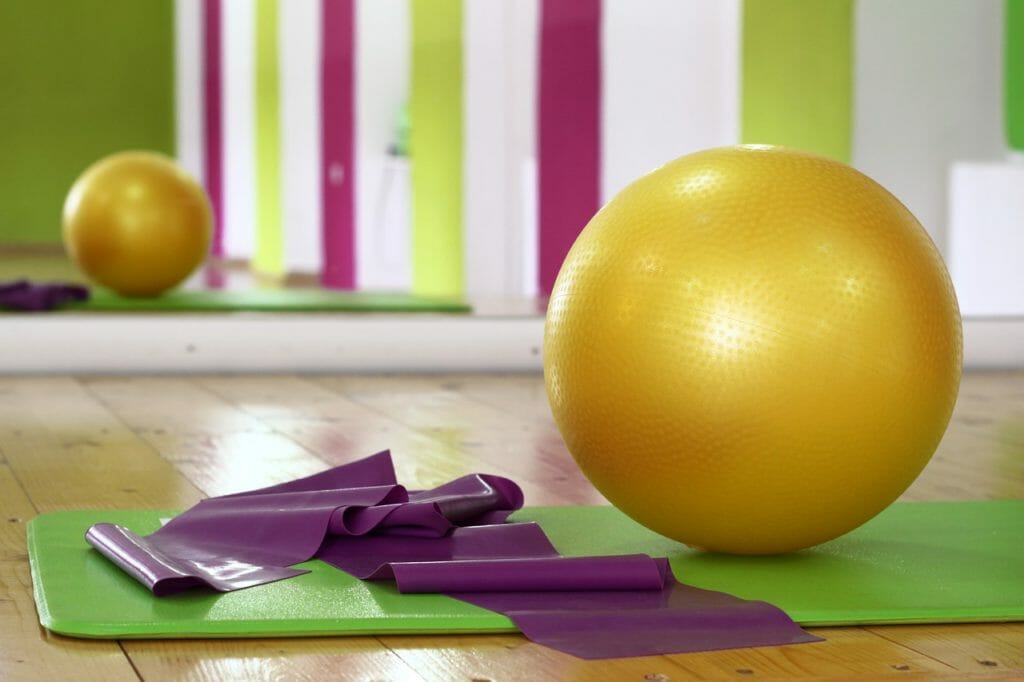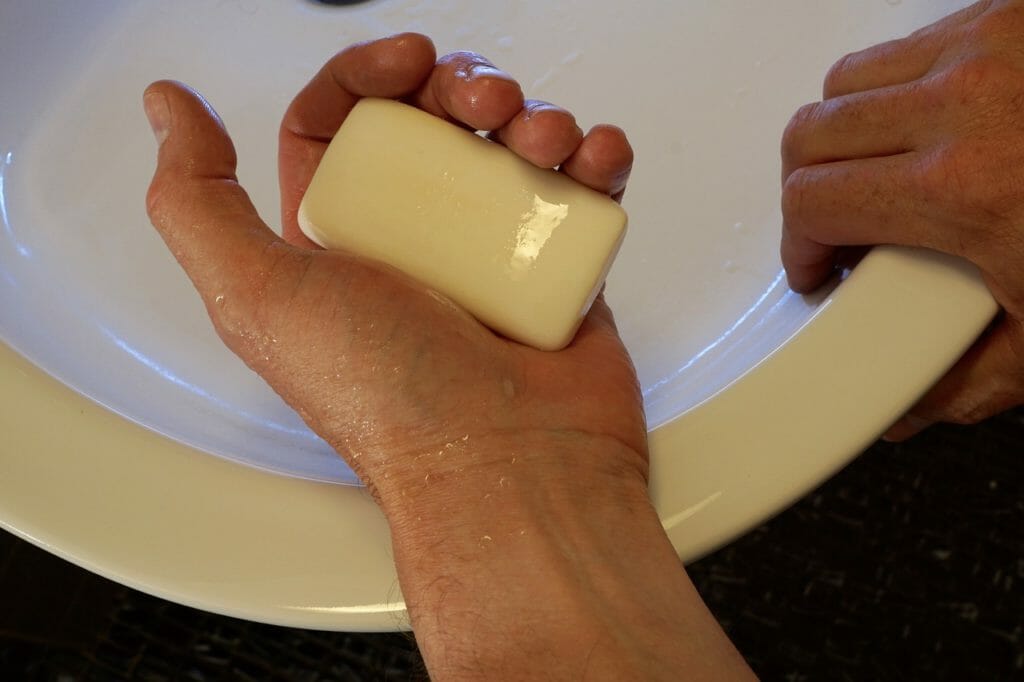
Jiu jitsu is an up close and personal sport.
Rolling with your opponent means a lot of rubbing against that competitor—and that can mean a lot of things rubbing off on you, things you don’t want like MRSA, ringworm, athletes foot, and even a type of herpes. Prevention is vital, and easy.
Understanding how these diseases are spread is the first step in preventing infections.
Skin infections, like those listed above, can be shared any number of ways, but they pretty much all boil down to one thing: contact.
Most often, that contact is skin to skin; however, these infections can also be spread by coming into contact with shared equipment, like mats and even towels.
If skin infections are spread by contact, than the simplest way to prevent contracting them is to not have any contact, right?
Sure, but solo practice can only accomplish so much. Sooner or later, you’ll need to make contact, and it’s not just contact with your partners that can lead to infection.
By paying attention to three simple practices, you can help prevent both infection and the spread of these diseases.
Maintain a Clean Practice Environment

Because skin infections are spread via contact, prevention starts with having a clean practice environment.
When mats and equipment aren’t routinely and properly cleaned, these infections can lurk on surfaces until they come into contact with you or a teammate.
From there, they not only cause infections, they can be further spread to others.
Preventing the spread of skin infections through equipment is a result of establishing cleaning routines.
The Center for Disease Control identifies several steps that should be a part of that routine. For starters, focus on surfaces that are commonly touched.
In a gym, the most important would be the mat, but don’t forget about other areas that might get overlooked, like doorknobs and chairs or benches.
Cleaning should be done with EPA-registered detergents or disinfectants (make sure to follow the manufacturer’s directions).
Before you reach for the bleach, though, keep in mind that chlorine has been associated with health problems like asthma and skin and eye irritation, per the CDC.
If you do use bleach, dilute it to around a 10 percent solution to avoid creating another problem while you’re trying to solve one.
If your gym doesn’t practice good cleaning, insist on it. It only takes one contact to contract any of these skin infections, and it’s not worth the risk.
Another area of equipment to be aware of is your personal equipment.
You might think that you’re safe because you’re the only one wearing your clothes or using your towel (it goes without saying that you shouldn’t use other people’s uniforms or loan out yours).
The truth is, though, that you’re not the only one touching your gear.
That’s why organizations like the CDC and the National Athletic Trainer’s Association recommend keeping your gear clean and laundering your uniform after each practice .
Practice Good Hygiene
The most important thing you can do to protect yourself from skin infections is to practice good personal hygiene. This is another area where the CDC provides guidelines for keeping yourself safe.

The first step is one that you might not think of.
As simple as it sounds, washing your hands is an important first step.
In fact, the New York State Department of Health identifies hand washing as the most important way to prevent spreading skin infections in any setting.
The CDC recommends washing your hands at least before and after training, but adopting this practice throughout your daily activities will also be beneficial, especially after using the restroom and before eating.
Preferably, you should use liquid soap over bar soap (bar soaps are often shared, and can actually result in sharing infections).
If you opt for hand sanitizers, make sure they’re alcohol-based with at least 60 percent alcohol.
Keeping your hands clean is only the start. You should also shower immediately after training as well—again, don’t share equipment, including soap and towels.
At a minimum, shower within 30 minutes of practice.
Treat Injuries Properly
Personal cleanliness is part of your personal responsibility. Safely treating an injury is another.
If you have any cuts, wounds, or abrasions, keep them covered with dry bandages or other dressings.
By leaving open wounds or abrasions exposed, you run a chance of skin infections entering your blood stream.
Where some of these diseases are actually bacterial, like MRSA (staph), or viral, like herpes simplex (“mat herpes”), you can run into a much more serious health risk, one that could become lethal.
Also, you should avoid squeezing, pinching, or “popping” a pimple.
This creates another lesion that can allow access for infections.
Interestingly enough, the National Association of Trainers also recommends refraining from “cosmetic body shaving” on areas like your chest, back, and arms as that can open up your skin, increasing the possibility of infection.
Of course, there’s always a chance that you’ll come into contact with someone who doesn’t practice good hygiene.
If there’s someone in your gym who doesn’t keep him or herself clean, or who doesn’t clean equipment after using it, it’s worth having a polite conversation with them.
Remember, part of your responsibility as a jiu jitsu practitioner is to keep your practice partners safe as well.
Helping them develop good practices will go a long way toward protecting everyone. Which leads into the next guideline.
Don’t Endanger Others
No one wants to sit out from practice, but sometimes that is exactly what you need to do.
Skin infections don’t always make you feel sick, so you may feel like there’s no reason to not practice, but you’re still very contagious.
It’s better to be safe than to infect your friends and teammates.
Regular skin checks are important—daily is even better. Monitor for any unexplained or sudden redness, rashes, or lesions.
If you do see signs of an infection, give yourself some time to heal. Also make sure to visit your doctor to prevent additional spreading and infection.
You can cover many of the infections—like ringworm or athlete’s foot—and you may be safe to practice, but first check in with your physician and follow any instructions you are given.
You should also check in with your coach and any teammates. They deserve to be aware of any risks.
Skin infections are a common problem in athletics, especially in sports with skin to skin contact.
Just because they’re out there doesn’t mean that they have to be a problem. You can help prevent them by helping to keep your gym and practice areas clean.
Practicing good hygiene is something that is important to more people than just your mother; your teammates will also appreciate it, and so will you.
Finally, if you do contract a skin infection, play it safe—check with your doctor and take some time to clear up any issues before returning to the mat.